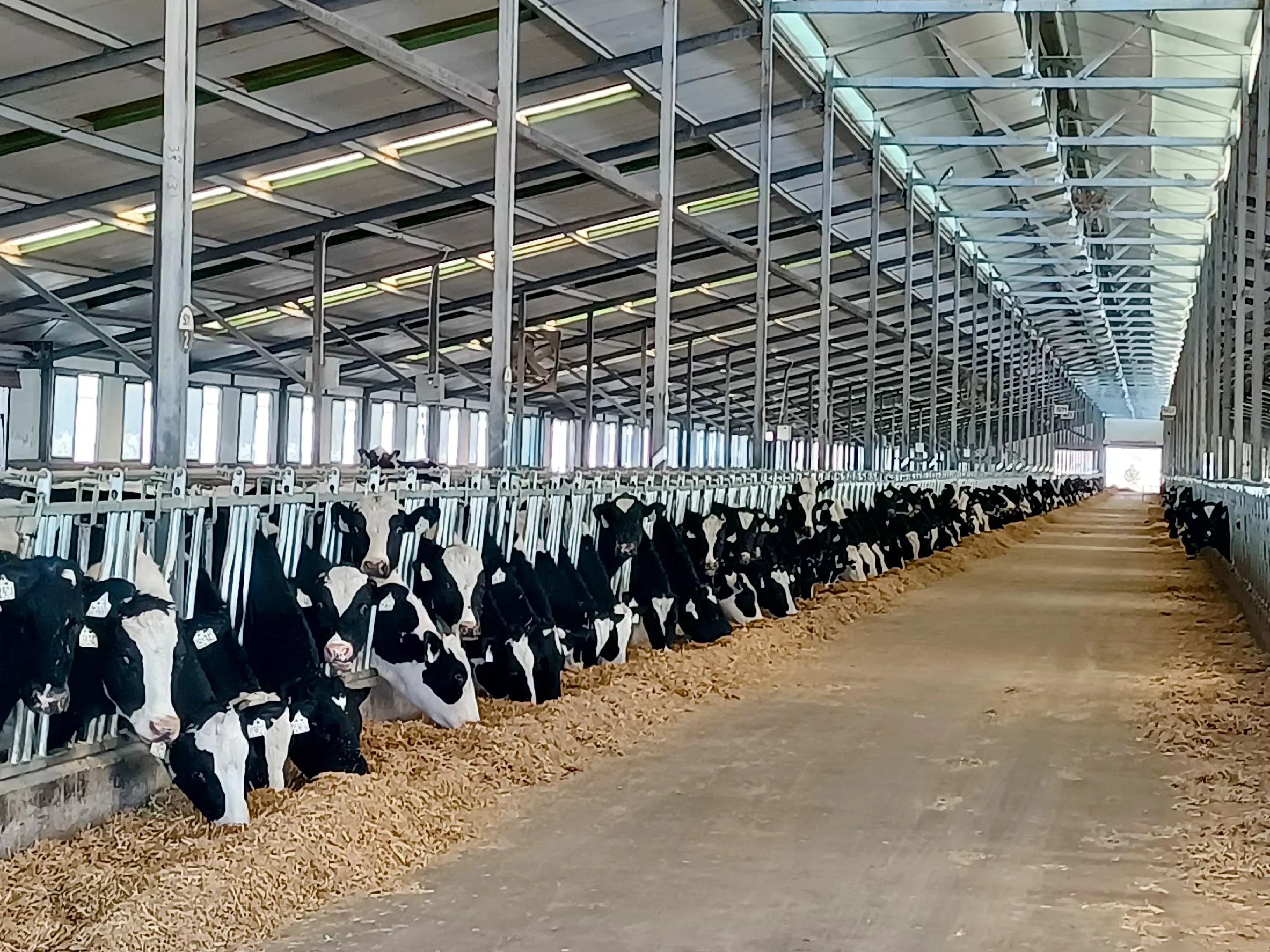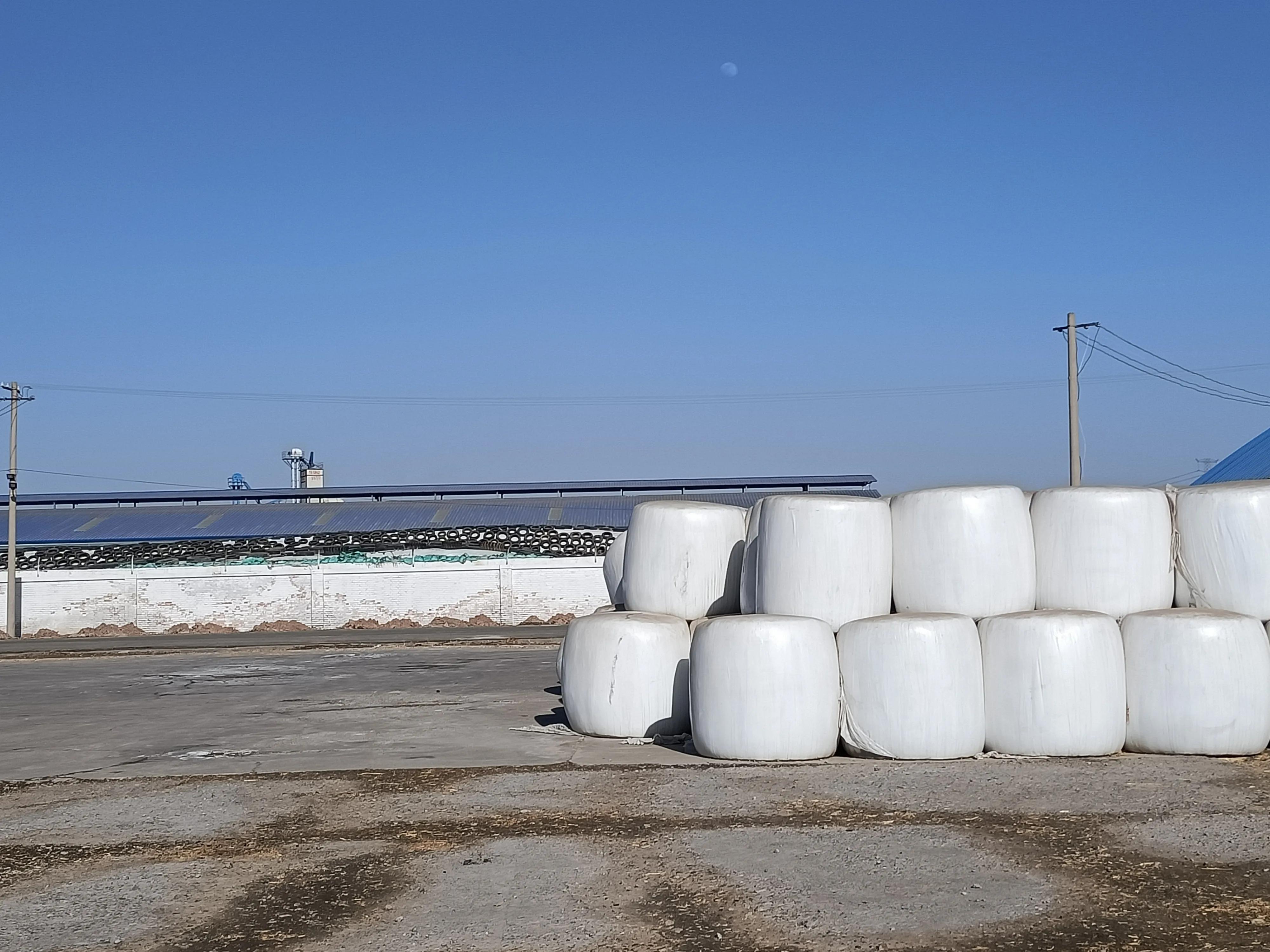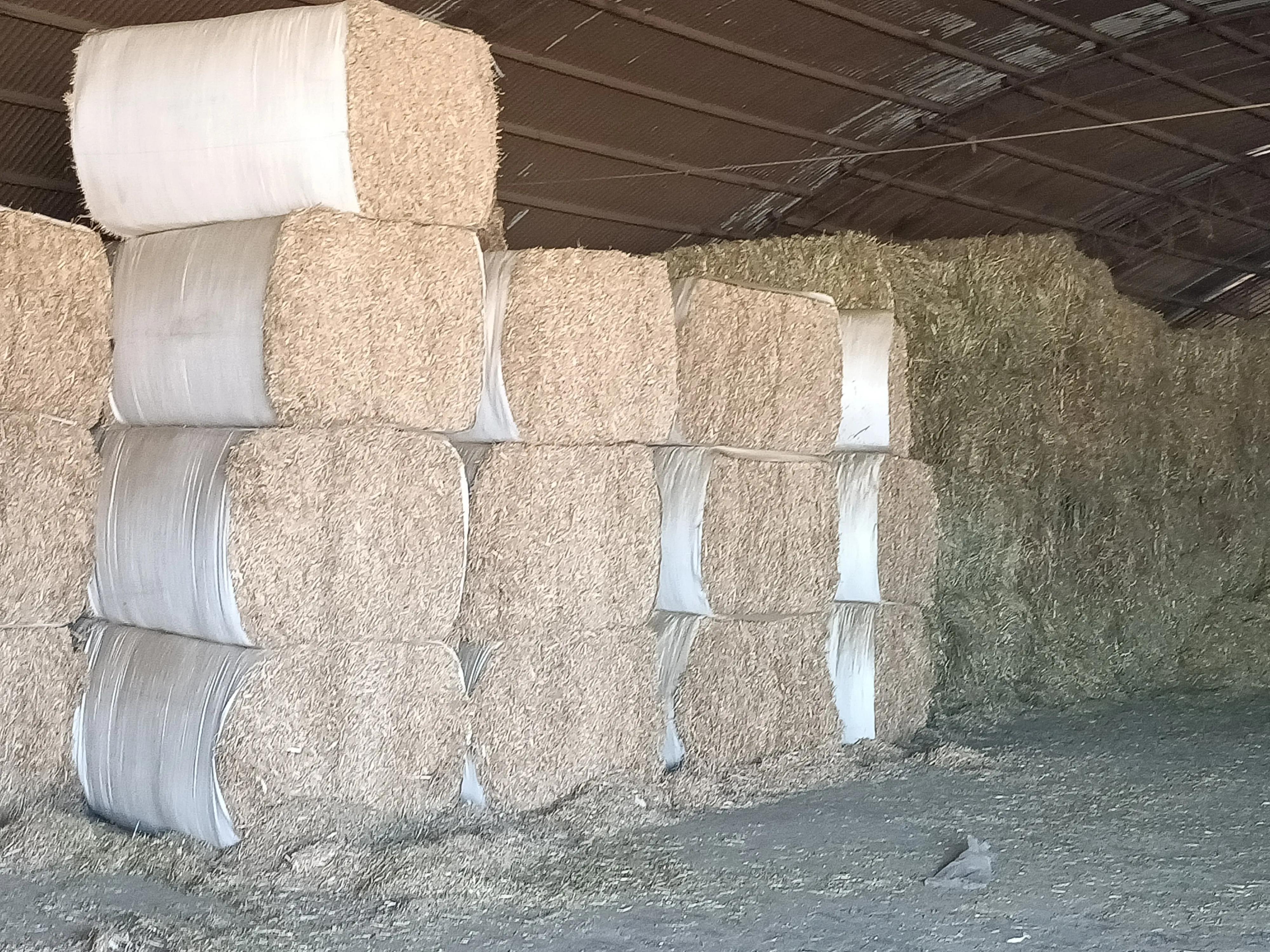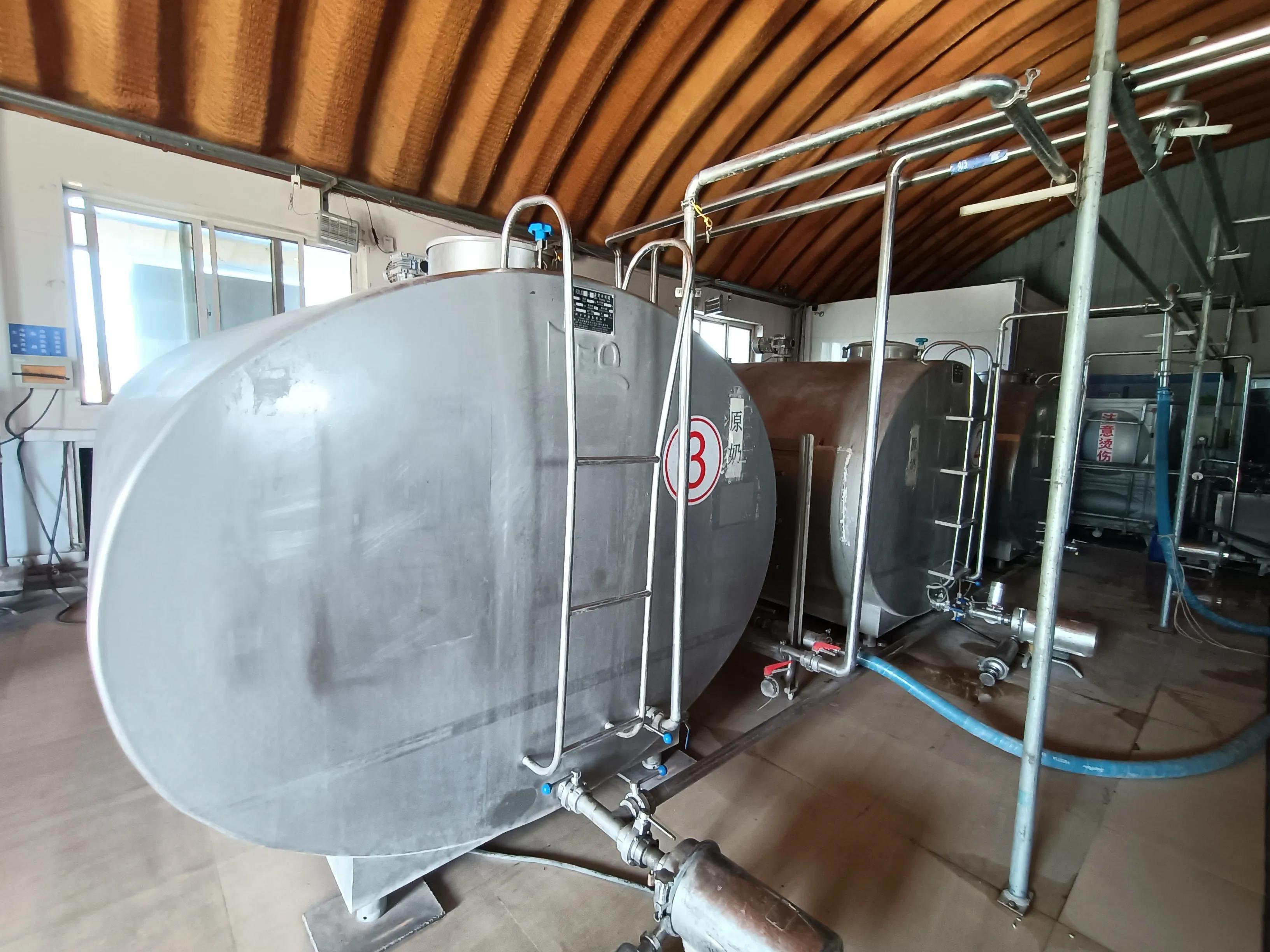The dairy industry suffers losses across the entire industry, not simply due to supply and demand imbalances. Please refer to the survey from the front line
According to a survey, the current national contract purchase price for fresh milk has dropped from over 4 yuan per kilogram last year to around 3.75 yuan. After the contract expires, the purchase price of fresh milk is only about 3 yuan per kilogram, falling below the average cost line of 4 yuan per kilogram of fresh milk. The significant decline in fresh milk prices has led to losses for the entire dairy farming industry, and some have even fallen into survival difficulties.
Shanxi Province has a large-scale dairy farm with 238919 cows on hand, 115904 lactating cows on hand, and a daily output of fresh milk of 2901.3 tons. Affected by the current downturn in the dairy industry market, the dairy industry has suffered losses of over 3 million yuan per day, and over the past two months, it has suffered losses of approximately 200 million yuan or more. The dairy industry in the province is facing serious difficulties.
So, what is the reason for the losses in the entire dairy industry?
1. The national dairy cattle inventory and fresh milk production have significantly increased, and dairy production has entered a temporary oversupply, causing a decline in fresh milk prices
According to the monitoring data of 201 new ranch construction and expansion projects nationwide by Holstein Magazine in 2022, the total number of new ranch expansion projects that entered the operational process in 2022 reached 1.47 million, with a planned total investment of nearly 42 billion yuan. Among them, the northern region (Northeast, Northwest, and North China) accounts for 88%, while the eastern, southern, and southwestern regions account for 12%. Compared with the 2021 monitoring project, the northern region has increased its proportion by 7 percentage points. A large number of pasture projects in Inner Mongolia have been invested in construction, accounting for half of the country's total, rising from 23% in 2021 to 49% in 2022. Dairy giant Yili has built over 70 farms nationwide, and peer experts estimate that there are 400000 to 500000 cows on hand.

According to data from the National Bureau of Statistics, in 2022, the national milk production reached 39.32 million tons, an increase of 2.49 million tons or 6.8%. In the past 6 years, the production has exceeded 30 million tons, and in 2022, it exceeded 39 million tons for the first time, an increase of 9 million tons or 29.4% compared to 2017.
The rapid increase in stocks, the substantial increase in milk production, and the lack of dairy product consumption due to the impact of the COVID-19, make the supply of dairy products present a temporary surplus of products, resulting in a downward trend in dairy prices.
2. The significant increase in forage and feed prices, as well as the significant increase in the production cost of fresh milk in dairy farms, is another driver of losses for the entire dairy industry
The cost of forage accounts for 70% of the total milk production cost of cows, while the cost of coarse feed accounts for 60% of the total feed cost. The cost of forage and feed not only determines the production efficiency of dairy cows, but also determines the fate of the dairy industry.

According to the monitoring of the Ministry of Agriculture and Rural Affairs, as of November 2022, the prices of major feed raw materials in China have risen at a high level. Among them, the average price of soybean meal in November was 5.51 yuan per kilogram, a year-on-year increase of 44.0%; The average price of feed corn is 3.04 yuan per kilogram, a year-on-year increase of 5.6%.

According to on-site investigations, the purchase price of silage corn land has increased from 270 yuan per ton in 2019 to over 500 yuan currently, with an increase of over 200 yuan per ton or 80%. Imported alfalfa has increased from 3000 yuan per ton before the epidemic to around 5000 yuan per ton, with an increase of around 2000 yuan per ton.
3. Dairy processing enterprises purchase fresh milk at a reduced price and refuse to renew contracts with some expired dairy farms, resulting in obstacles to the sales of fresh milk in dairy farms
Due to the decrease in demand in the dairy market and the oversupply of products, the purchase price of fresh milk for dairy processing enterprises has also been correspondingly reduced, resulting in losses in dairy production. According to the monitoring data of the national dairy industry technology system, as of November 2022, the average production cost of raw milk in radiation farms was 3.89 yuan/kg, a year-on-year increase of 4.6%. According to on-site investigations, the cost line for large dairy farms is 4.1 to 4.4 yuan per kilogram of fresh milk; Medium scale fields range from 3.7 yuan to 3.8 yuan; The cost for small-scale or below a hundred free range households is around 3 yuan.

For some dairy farms with expired contracts, dairy processing companies refuse to renew their milk collection contracts. Other dairy processing companies also refuse to sign contracts for the expired fresh milk from these dairy farms, which puts these dairy farms that cannot find a receiving company in a survival dilemma and can only sell it to intermediaries or secondary dealers at a price of 2.5 yuan per kilogram. There are also some small-scale dairy farms with low production and management levels, and dairy processing enterprises have unconditionally refused to purchase, causing these dairy farms to rely on intermediaries to sell milk due to difficulties in selling milk, often suffering unbearable hardships and often being deceived. After the decline in milk prices, production and operation became more difficult, and survival became a problem. In order to survive, dairy farms have significantly reduced milk production and begun to eliminate cows. The remaining cows are also kept as beef cattle, waiting for the situation to improve.
4. Dairy farms lack risk awareness and resistance in terms of cow feeding, management, and risk response
In the production of dairy cows, some producers, due to a lack of scientific feeding management knowledge and standardized breeding techniques, have not expanded their population and improved their quality over the years. They are often rejected or terminated by dairy processing enterprises due to low production and quality assurance, causing great difficulties in the sales of fresh milk produced.
Some dairy farms, due to the high rise of fresh milk prices, pursue short-term high profits and often change the dairy processing enterprises that receive milk, resulting in a lack of stability in the sales of fresh milk in dairy farms. After the contract expires, dairy processing enterprises refuse to renew the milk collection contract with expired dairy farms in order to reduce their own losses, resulting in a hindrance to the sales of fresh milk produced by the dairy farms.
Some dairy farms have already notified the milk supply unit in advance before the contract expires. If you wish to reduce the price for milk supply, you can renew the milk supply contract. However, due to the lack of market risk awareness among the management personnel of the dairy farm, they feel that they are at a loss, delaying the opportunity to sign the contract, causing the dairy farm to turn from less loss to more loss, and from a loss problem to a survival problem. There is even a risk of dairy farms closing down due to the lack of fresh milk income, capital chain disruption, and so on.


